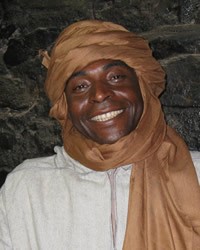Tuareg, Tahaggart in Libya

Photo Source:
Jacqueline Macou - Pixabay
|
Send Joshua Project a map of this people group.
|
| People Name: | Tuareg, Tahaggart |
| Country: | Libya |
| 10/40 Window: | Yes |
| Population: | 24,000 |
| World Population: | 156,000 |
| Primary Language: | Tamahaq, Tahaggart |
| Primary Religion: | Islam |
| Christian Adherents: | 0.00 % |
| Evangelicals: | 0.00 % |
| Scripture: | Portions |
| Ministry Resources: | Yes |
| Jesus Film: | No |
| Audio Recordings: | No |
| People Cluster: | Tuareg |
| Affinity Bloc: | Arab World |
| Progress Level: |
|
Introduction / History
Although the origin and early history of the Tuaregs (more politely known as Tamacheqs) are undefined, these Berber nomads appear to have traveled down from North Africa in a series of migrations as early as the seventh century. By the end of the fourteenth century, Tamacheq tribes had established themselves as far south as the Nigerian border.
The chief characteristics of the Tamacheqs include the unity of their language, their alphabet, their complex social organization, and their class structure. They are divided into various subgroups such as the Tahaggart. That is also the name of their Tuareg dialect.
This subgroup lives in Algeria, Niger and Libya. In 2011 they were suspected of defending Khadaffi's regime, so their population might be dwindling in Libya's post Khadaffi Era.
What Are Their Lives Like?
Tuareg society also has an elaborate structure. The main division is between the noble class and the various serf classes.
The lowest class does both the manual and domestic labor. This class is made up of ethnically mixed peoples who live in a cooperative relationship with their masters. Many were originally slaves, either taken during war or bought at slave markets. Three slave groups in the lower class are the iklan, the inaden, and the harratin. The iklan take care of herding, cooking, and other domestic chores. The inaden work as artisans and blacksmiths for the Tuaregs. The harratin are tenant farmers who work as share-croppers. Sadly, the Tuaregs have very little respect for these groups.
Veils worn by the Tuareg men are called tidjelmoust. The most preferred veils are dyed indigo. To show respect, the men always cover their mouths, noses, and foreheads in the presence of foreigners and their in-laws.
What Are Their Beliefs?
Though the Tuaregs are virtually all Sunni Muslims, they have a reputation among other Muslims for being lukewarm in their faith. They practice a passive form of Islam, infused with folk beliefs and magic. Protective charms or amulets are commonly worn, and belief in spirits is widespread. There are several Marabouts (those of the "holy class") living among them, some of whom run Islamic schools.
In most Tuareg groups, there are also whole tribes of ineslemen or marabouts. These are "holy people" who, like other tribes, are led by their own chiefs. Among some of the Berbers, such tribes are considered to be different from ordinary men. They are believed to possess the powers of protection and healing, even after death.
What Are Their Needs?
The most urgent need is for the Tamacheq people to realize that only the Lord Jesus Christ can pay for their sins. They have many practical needs that skilled medical, business, and educational could address.
Prayer Points
Pray for the Holy Spirit to give the Tamacheq people in Libya teachable and understanding hearts.
Pray that a strong movement of the Holy Spirit will bring entire Tamacheq families into a rich experience of God's blessing.
Pray for Tamacheq families to be drawn by the Holy Spirit to seek forgiveness, and to understand the adequacy of Christ's work on the cross.
Pray for teams of believers to do sustained, focused prayer for the Lord to open the hearts of Tamacheq family leaders to experience God's blessing through a movement of family-based discovery Bible studies.